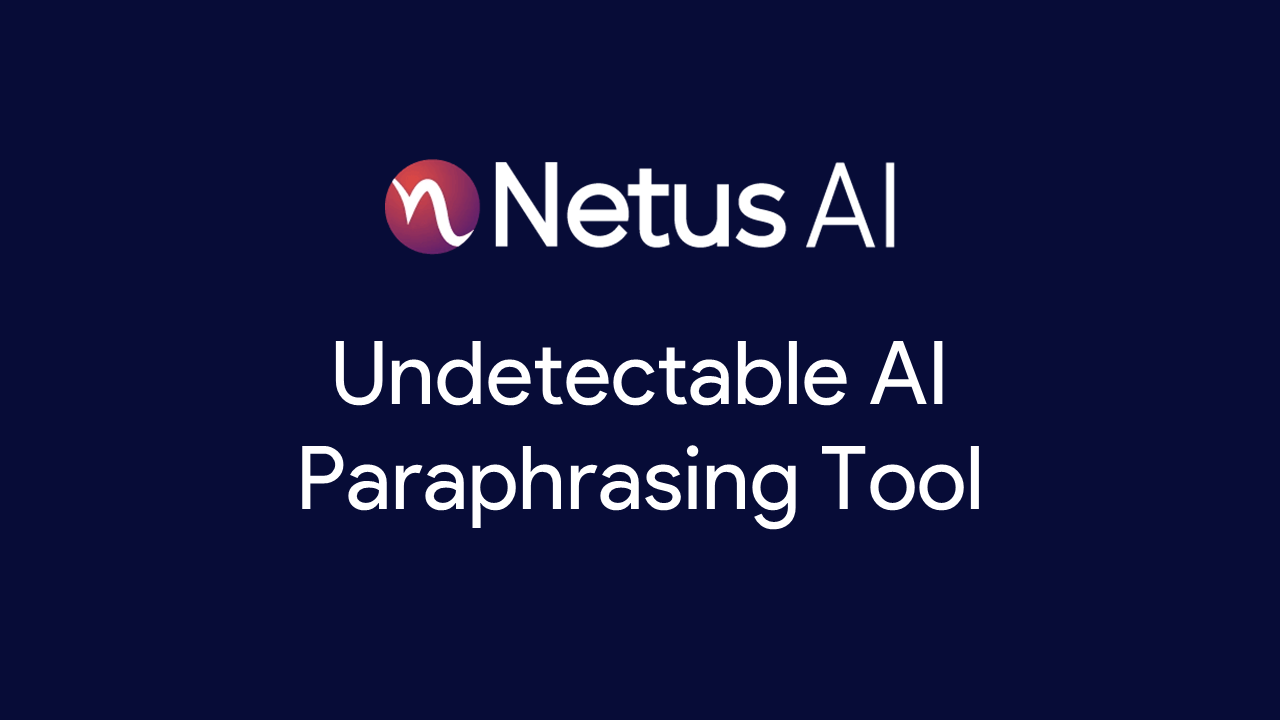NetusAI
NetusAI
Blog Article

Navigating the Evolving Landscape of AI Paraphrasing and Detection Tools
In the realm of content creation, NetusAI stands out as an advanced AI-driven paraphrasing tool designed to assist writers in producing unique, high-quality content efficiently. This tool transforms AI-generated content into human-like writing, offering various features tailored to different content needs, including an AI bypasser to avoid detection and an AI detector to distinguish between human-written and AI-generated text with high accuracy. The effectiveness and detectability of such tools, however, have become a significant point of discussion, particularly regarding Turnitin's capabilities.
The Role of NetusAI in Content Creation
NetusAI is crafted to provide content creators with a seamless experience, ensuring that the generated content is both unique and of high quality. This tool leverages sophisticated algorithms to paraphrase text, aiming to produce output that mimics human writing closely. The inclusion of an AI bypasser feature is particularly noteworthy, as it attempts to avoid detection by AI-detection tools. Additionally, NetusAI boasts an AI detector that accurately distinguishes between human and AI-generated text, ensuring the integrity and authenticity of the content produced.
Turnitin's Detection Capabilities
The question, "Does QuillBot remove AI detection?" often arises among users seeking to understand the effectiveness of paraphrasing tools. Turnitin, a widely-used plagiarism detection service, has significantly improved its algorithms to identify AI-generated content, including that paraphrased by tools like QuillBot. Turnitin's approach involves analyzing text not just for exact word matches but also for structural, contextual, and linguistic patterns. This sophisticated analysis means that even significant alterations in wording by QuillBot can potentially be flagged by Turnitin.
Evaluating QuillBot's Effectiveness
QuillBot's primary function is to rephrase text while preserving its original meaning, offering an apparent solution for those aiming to avoid plagiarism. However, the effectiveness of QuillBot in evading detection by Turnitin is inconsistent. Users have reported mixed results; some have successfully submitted QuillBot-paraphrased content without issues, while others have had their work flagged. This variability suggests that the detectability of QuillBot's paraphrasing depends largely on how the paraphrasing is executed.
Or is Quillbot AI detectable, frequently appears in discussions about the reliability of AI paraphrasing tools. With Turnitin enhancing its machine learning and natural language processing capabilities, the detection of AI-generated content, including that produced by QuillBot, is becoming more accurate. These advancements underscore the importance of understanding the limitations and capabilities of AI paraphrasing tools in the context of academic and professional writing.
Advanced Detection Techniques
Turnitin's continuous improvements in detection technologies reflect its commitment to maintaining the integrity of academic and professional content. By incorporating machine learning and natural language processing, Turnitin enhances its ability to recognize nuanced changes in paraphrased text. This evolution in detection capabilities means that tools like QuillBot must continually adapt to avoid being flagged.
Practical Implications for Content Creators
For content creators, understanding the dynamics between paraphrasing tools like QuillBot and detection services like Turnitin is crucial. Relying solely on paraphrasing tools to avoid plagiarism is increasingly unreliable as detection algorithms become more sophisticated. While tools like NetusAI offer features designed to circumvent detection, their long-term effectiveness remains uncertain. Content creators must therefore be vigilant and consider multiple strategies to ensure their work remains original and free from plagiarism concerns.
Conclusion
The interplay between AI paraphrasing tools and detection services presents a complex landscape for content creators. NetusAI exemplifies the advancements in AI-driven writing assistance, providing powerful tools for generating human-like content. However, as Turnitin and similar services enhance their detection capabilities, the question of whether tools like QuillBot can remain undetected becomes more pertinent. Understanding these dynamics and the limitations of paraphrasing tools is essential for anyone engaged in producing high-quality, authentic content. The evolving capabilities of detection algorithms underscore the need for continuous adaptation and vigilance in the use of AI-driven writing tools.
Report this page